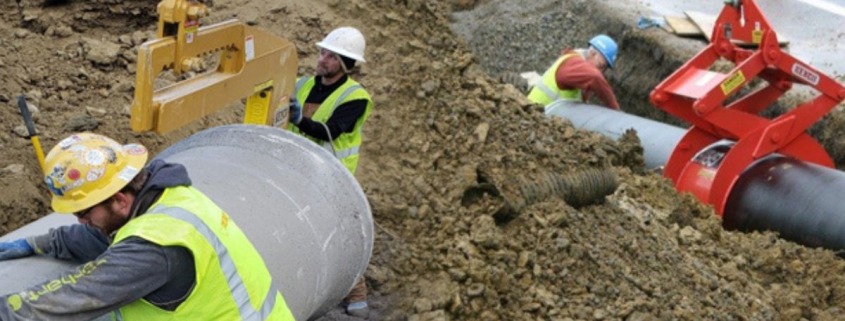Hook Attachments vs. Scissor Lifting Clamps
Without the right lifting tools, completing certain projects can become absolutely impossible. However, there are a slew of options available on the market, and it can be daunting to determine which one is right for your project. To help you pick the right tool to get your next heavy-lifting job done swiftly, efficiently, and safely, this guide will walk you through the differences between hook attachments and scissor-lifting clamps.
Hook Attachments: Pros and Cons
Hook attachments are a real game-changer when it comes to handling large, heavy pipes. These hooks slide into the shaft of the pipe from one side and can be used to homing pipe into the next section. The quick and easy attachment to lifting equipment also streamlines the moving process, making it faster and more efficient.
However, a key drawback of using concrete pipe hook attachments is that they require a significant amount of space on the side of the pipe it will be used. This is best accomplished in trenches that are placing larger concrete pipe one segment at a time. These hooks however are not suited for pipe segments longer that the common 8’ length for RCP. If you’re looking for an attachment that can work on non-concrete pipe or pipe that may be longer than eight foot, it may not be the best option.
Scissor Lifting Clamps: Pros and Cons
Scissor lifting clamps offer a different approach to moving pipes, one that many find flexible and reliable. These clamps excel in picking up or moving smaller diameter pipe or pipe that is not concrete, for instance PVC. Scissor pipe clamps require less overall space than a hook as they fit over the outside of the pipe. The only additional space required is a slightly larger trench than what would fit the pipe. This is for the easy removal of the tongs once the pipe has been set.
On the flip side, scissor-lifting clamps do have a few limitations to keep in mind. While they are adaptable, they apply pressure from the outside, there’s a chance of marking or damaging the surface of the material, something to consider if aesthetics are important for your project. However these clamps can also be outfitted with a rubber liner to assist with protection of the pipe.
Which One Is Right for Your Next Project?
Ultimately, whether you should use a hook attachment or scissor lifting clamp depends on the level of versatility you’re looking for. Both tools are relatively easy to use, are great for swiftly moving heavy objects, and can streamline your construction operations.
If your projects typically involve pipe lifting and you are mostly working with RCP (concrete pipe), a hook attachment is likely your best bet. On the other hand, if you need a tool for a non-concrete pipe with lengths exceeding 8 feet, a scissor lifting clamp can be a critical tool in your arsenal.
The good news is that Kenco Corporation sells both tools, so no matter which you choose, you never have to go far to find durable, rugged, and reliable equipment. Our concrete pipe hook can handle a range of pipe shapes, from circular to box-shaped and beyond.




Leave a Reply
Want to join the discussion?Feel free to contribute!